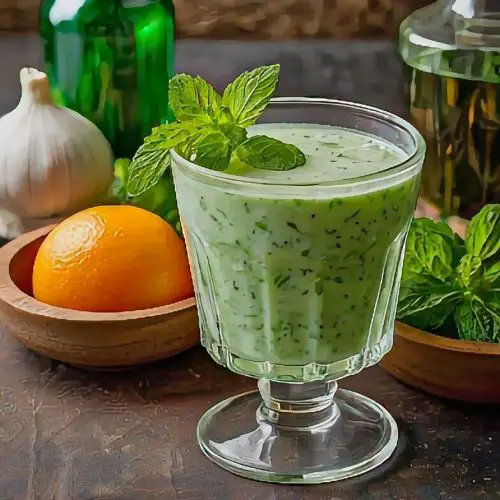The Dhoog Afghani recipe is a traditional Afghan yogurt drink that we drank often during our trip to Afghanistan. This recipe is known for its refreshing taste and is often served as a cool, calming beverage in Afghan cuisine. The Dhoog Afghani recipe typically features a blend of yogurt, water, and spices.
When we tried the Dhoog Afghani recipe, it was clear that it was made from high-quality ingredients. The drink had a smooth texture and a pale, creamy colour. It was served chilled, which made it particularly refreshing, especially in the warm weather. The spices added to the Dhoog Afghani recipe gave it a unique taste that we hadn’t experienced before.
Our visit to the restaurant where we tried the Dhoog Afghani recipe was quite an experience. The people there were very welcoming and eager to share their knowledge about Afghan cuisine. We discussed the Dhoog Afghani recipe with some locals who explained how it is commonly enjoyed in Afghanistan. They even shared the recipe with us, which was a great souvenir from our trip.
Trying the Dhoog Afghani recipe in its country of origin gave us a deeper appreciation for Afghan food. The drink’s taste and the context in which we enjoyed it made it a standout part of our culinary journey in Afghanistan. It was fascinating to learn about the Dhoog Afghani recipe from those who make it regularly and to experience it in such an authentic setting.
Ingredients For the Dhoog Afghani recipe
Whole Milk Yogurt
Water
15 Ice Cubes
Cucumber Chopped
Mint Leaves Chopped
Salt
Cumin Powder
Black Salt
Cooking Instructions For the Dhoog Afghani recipe
- In a large mixing bowl, combine 7 cups of whole milk yogurt with 4 cups of water and add 15 ice cubes to chill the mixture. Stir the yogurt and water mixture until well combined and smooth.
- Chop one cucumber into small pieces (if using Persian cucumber, use two instead) and set it aside. Take 20-24 mint leaves, chop them finely, and keep them ready for later use.
- Gradually add 1/2 teaspoon of salt to the yogurt base and mix well to incorporate the seasoning. Next, add 1 teaspoon of cumin powder to enhance the flavor. Finally, sprinkle 1 teaspoon of black salt (adjust to taste) to add a tangy and savory touch.
- Gently fold in the chopped cucumber into the seasoned yogurt base, ensuring even distribution. Follow by adding the finely chopped mint leaves to the mixture and mix well, allowing the flavors to blend.
- Cover the bowl with the yogurt mixture and refrigerate it for at least 2 hours or until it is thoroughly chilled. The chilling process allows the flavors to meld together and enhances the taste of the Dhoog.
- Once chilled, take out the bowl from the refrigerator and give the Dhoog a good stir. Ladle the creamy and refreshing Afghani Dhoog into serving bowls. Garnish with additional mint leaves if desired.
5 Things I Love About Afghanistant Food
Afghan food uses spices like cumin, coriander, and cardamom in a way that enhances the flavor of the dish without overpowering it. I appreciate how the spices complement the ingredients, letting the natural taste of the food shine while still offering a robust flavor.
Rice plays a central role in Afghan cuisine, with dishes like Kabuli Pulao being a great example. The rice is cooked to perfection, fluffy and fragrant, often mixed with meat and vegetables. The combination of textures and flavors, such as the sweetness from raisins or carrots, makes Afghan rice dishes truly special.
Afghan kebabs, especially lamb and beef, are marinated with spices and cooked over an open flame. I love the tenderness of the meat and the smoky flavor it gets from grilling, which adds a depth of taste that is hard to resist.
Afghan bread, like naan, is freshly baked and soft, making it a great side for almost any meal. I enjoy how it’s used to scoop up stews or eaten with grilled meats, offering a simple yet satisfying addition to each dish.
Afghan cuisine combines different textures in its meals. From the soft, fluffy rice to the tender meats and crispy vegetables, the variety of textures adds excitement to every bite. This variety keeps the food interesting and enjoyable.
Essiential Ingredients for Cooking Afghanistan Food at Home
Cumin is a staple spice in Afghan cooking, known for its warm, earthy flavor. It’s commonly used in meat dishes, rice, and stews to add depth and complexity to the food. For example, cumin is a key ingredient in Afghan kebabs, adding a distinct taste to the grilled meat, and it is also used in Kabuli Pulao, the national rice dish.
Cardamom, both green and black varieties, is frequently used in Afghan cuisine to add a fragrant, slightly sweet aroma to dishes. Green cardamom is often found in desserts like firnee, a milk-based pudding, while black cardamom is used in savory dishes, such as stews and pilafs, to bring a smoky undertone.
Lamb is one of the most common meats in Afghanistan and is often marinated and grilled or slow-cooked in stews. It’s a key component of dishes like lamb kebabs and lamb stew (qorma), where the meat is cooked with a variety of spices, including cumin and coriander, to enhance its flavor.
Rice is essential to many Afghan meals, particularly long-grain varieties like basmati rice. It forms the base of dishes like Kabuli Pulao, where it’s cooked with meats, raisins, and carrots, as well as plain rice served alongside stews like korma or qorma.
Yogurt is frequently used in Afghan cooking, both as a base for sauces and as a condiment. It provides a cool, tangy contrast to the rich and spiced dishes. In dishes like mantu (Afghan dumplings), yogurt is drizzled on top to add creaminess and balance the heavier flavors.
Saffron, although used sparingly, adds a luxurious golden hue and subtle flavor to Afghan rice dishes. It’s particularly important in festive dishes like shirin pulao, where rice is flavored with saffron, almonds, and dried fruits for a special occasion.
Garlic is used in almost every Afghan dish, providing a sharp and pungent flavor that complements the spices and meats. It’s common in stews, kebabs, and rice dishes, helping to build a savory base that underpins the more fragrant ingredients like cardamom and cumin.
Important Spices for Afghani Recipes
Cumin is one of the most important spices in Afghan cooking, providing a warm, earthy flavor that enhances a variety of dishes. It is frequently used in meat-based dishes, such as kebabs and stews, where its robust aroma complements the richness of the meat. Cumin is also a key ingredient in rice dishes like Kabuli Pulao, adding depth to the overall flavor profile.
Coriander is another essential spice in Afghan cuisine, known for its slightly citrusy and nutty taste. It is often ground into a powder and added to stews, soups, and meat marinades. Coriander is particularly common in qormas, where it helps balance the richness of the sauce and meat with its fresh, zesty notes.
Cardamom, both green and black, plays a significant role in Afghan recipes. Green cardamom is used to flavor desserts like firnee, a traditional Afghan pudding, while black cardamom is more common in savory dishes, such as stews and pilafs. The sweet and smoky flavors of cardamom add complexity and a fragrant aroma to many Afghan meals.
Turmeric is used widely in Afghan cooking for its bright yellow color and earthy, slightly bitter flavor. It is a key ingredient in many stews and rice dishes, such as Kabuli Pulao, where it provides a subtle spice and beautiful golden hue. Turmeric is also known for its health benefits, making it a staple in everyday Afghan cooking.
Saffron is a prized spice in Afghan cuisine, often reserved for special dishes due to its high cost and distinct flavor. It adds a subtle floral taste and a vibrant yellow color to festive dishes like shirin pulao, a sweet rice dish served on important occasions. Though used sparingly, saffron elevates the flavor and presentation of many Afghan rice dishes.
Cinnamon is used to bring warmth and sweetness to Afghan recipes, especially in rice dishes and desserts. In Kabuli Pulao, cinnamon is often combined with other spices to create a balanced, fragrant dish. It’s also used in Afghan desserts, adding a gentle spice that complements sweet ingredients like dried fruits and nuts.
FAQ For the Dhoog Afghani recipe
Q: What is a Dhoog Afghani recipe?
A: A Dhoog Afghani recipe is a traditional Afghan drink made from yogurt, water, and a variety of herbs and spices. It is often enjoyed as a refreshing, cooling beverage that complements spicy dishes and helps with digestion.
Q: What are the main ingredients in a Dhoog Afghani recipe?
A: The main ingredients in a Dhoog Afghani recipe include yogurt, water, and fresh herbs such as mint and cilantro. Spices like cumin and salt are also added to enhance the flavor. Some variations may include lemon juice or garlic for additional taste.
Q: How is a Dhoog Afghani prepared according to a Dhoog Afghani recipe?
A: In a Dhoog Afghani recipe, yogurt is first whisked until smooth and then mixed with water to achieve a drinkable consistency. Fresh herbs and spices are added, and the mixture is stirred well. It is typically chilled before serving.
Q: Can Dhoog Afghani be made ahead of time?
A: Yes, Dhoog Afghani can be made ahead of time. Prepare the drink and store it in the refrigerator until ready to serve. It is best enjoyed cold and can be kept for a few days in the fridge.
Q: What dishes pair well with Dhoog Afghani?
A: Dhoog Afghani pairs well with a variety of Afghan dishes, especially those that are spicy or rich. It complements dishes like kebabs, pilaf, and curries, providing a refreshing and cooling contrast to the flavors.

Afghani Dhoog Recipe
Equipment
- large mixing bowl
- Ladle or serving spoon
- Chopping board
- Knife
Ingredients
- 7 cups whole milk or yogurt
- 4 cups water and add 15 more ice cubes
- 1 cucumber chopped [use 2 if using persian cucumber]
- 20-24 mint leaves chopped
- 1/2 tsp salt
- 1 tsp Cumin powder
- 1 tsp black salt adjust to taste
Instructions
Prepare the Yogurt Base:
- a. In a large mixing bowl, combine 7 cups of whole milk yogurt with 4 cups of water and add 15 ice cubes to chill the mixture.
- b. Stir the yogurt and water mixture until well combined and smooth.
Add Cucumber and Mint:
- a. Chop one cucumber into small pieces (if using Persian cucumber, use two instead) and set it aside.
- b. Take 20-24 mint leaves, chop them finely, and keep them ready for later use.
Season the Dhoog:
- a. Gradually add 1/2 teaspoon of salt to the yogurt base and mix well to incorporate the seasoning.
- b. Next, add 1 teaspoon of cumin powder to enhance the flavor.
- c. Finally, sprinkle 1 teaspoon of black salt (adjust to taste) to add a tangy and savory touch.
Mix in Cucumber and Mint:
- a. Gently fold in the chopped cucumber into the seasoned yogurt base, ensuring even distribution.
- b. Follow by adding the finely chopped mint leaves to the mixture and mix well, allowing the flavors to blend.
Chill the Dhoog:
- a. Cover the bowl with the yogurt mixture and refrigerate it for at least 2 hours or until it is thoroughly chilled.
- b. The chilling process allows the flavors to meld together and enhances the taste of the Dhoog.
Serve the Afghani Dhoog:
- a. Once chilled, take out the bowl from the refrigerator and give the Dhoog a good stir.
- b. Ladle the creamy and refreshing Afghani Dhoog into serving bowls.
- c. Garnish with additional mint leaves if desired.




1 comment
I followed the recipe exactly, and the result was superb!
Comments are closed.